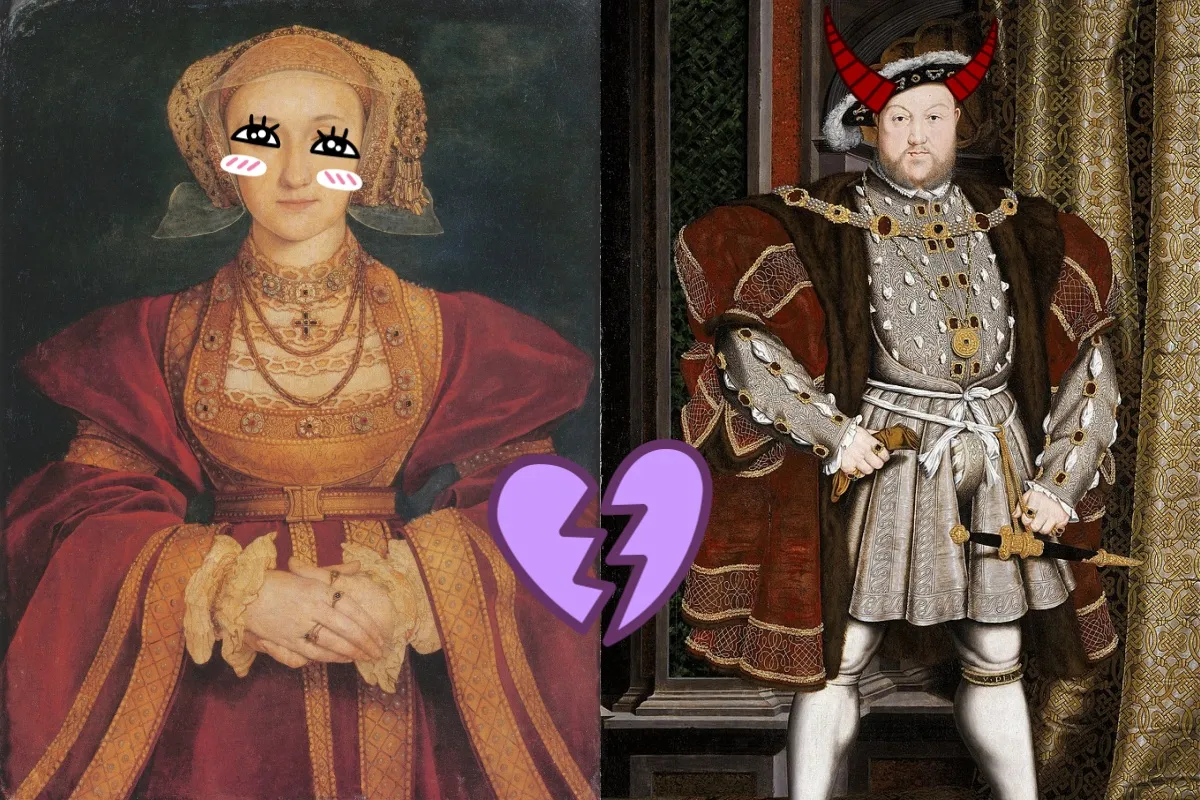Divorce is hard, but most women don’t have to deal with their husband’s previous two divorces ending in the deaths of his previous brides. When Anne of Cleves married Henry VIII on January 9th, 1540, she likely had no idea about what it would mean for the rest of her life. After roughly six months the marriage was over, unlike Katherine of Aragon or Anne Boleyn before her, AOC walked away with her head and richer than before. What happened?
Let’s set the scene.
Katherine of Aragon, dead from cancer, has left behind Mary Tudor, who is now a whole-ass adult twenty-four-year-old right now and holding down the Catholic fort. Anne Boleyn, beheaded, has left behind Elizabeth Tudor, who is now seven and really just trying to survive the mess. Jane Seymour, dead from complications following pregnancy, has left behind the son that Henry wanted so badly he traumatized generations: Edward, who is all of three years old.
Henry is super sad about Jane, because finally a woman did her f***ing duty and gave him a son, am I right? Now it’s time for him to marry again and try to get another son because, as Henry knows very well, sometimes the first boy dies, and you need someone to pick up the slack.
Due to being no longer a member of the Roman Church, Henry needs Protestant allies and finds one in William, Duke of Jülich-Cleves-Berg. William has sisters to give away, Anne and Amalia.
Henry enlists Hans Holbein to paint portraits of the sisters and make sure not to flatter either of them. Henry has always married 10s, and he’s not trying to break that trend. Henry picks Anne, and now our girl is leaving Cleves and on her way to merry old England, where she is about to really regret being the cute sister.
Let’s talk about Anne. We really don’t know that much about her life before she became Henry’s bride other than that when she was younger, she was engaged to Francis I, Duke of Lorraine at nine years old. Unlike Katherine, Anne, or even Jane, she was not as knowledgeable about the courtly ways of flirtation and bearing. She didn’t speak much English and hadn’t really be raised for this position, having received no serious education. In many ways, Anne was set up to fail, but the real issue came when Henry decided to do a flirty cat-fish.
Despite being a wife murderer, Henry VIII was kind of a romantic. He liked to reenact courtly love plays and dress up. It had been something he’d done with his first two wives. Unlike a lot of royals, Henry had also, to this point, picked every woman he married. Each was a love match, so Anne, a foreign princess he’d never met before, was an anomaly.
On New Year’s Day 1540, Henry and some of his courtiers went, disguised, into the room where Anne was staying, surprising her when she finally arrived in England. Anne did not know what the hell was going on, and Henry, in costume, kissed her and delivered a token of the king’s affection. Anne was taken aback by all of this, and it was pretty much the death knell of Henry and Anne’s relationship. He revealed who he was, but told others that he was disappointed in Anne.
Still, the marriage went forward, despite Henry trying to get out of it. After their first night as man-and-wife, Henry continued to complain that he was unpleased with Anne and unable to perform his manly duties—honestly, probably for the best, Anne.
Henry was, by all accounts, pleasant to Anne in person, but talked a lot of crap to everyone else. Anne did not really seem to understand what was going on, but very much tried to adjust to English ways.
“She was appareiled after the English fashion, with a French hood, which so set forth her beauty and good visage, that every creature rejoiced to behold her,” contemporary chronicler Edward Hall said. So she was looking cute and having her glow up. But Henry and his wondering eye had turned onto the seventeen-year-old Catherine Howard.
Thomas Cromwell, who had been responsible for putting the marriage together, was arrested for treason and put in the Tower of London. On June 24, Anne was ordered to be removed from court and go to Richmond Palace. It was then when she learned that Henry had called their marriage into question because of that betrothal to the Duke of Lorraine, which was bullshit, but Henry wanted to end the marriage, and he couldn’t just cut Anne’s head off.
Anne, deciding not to go the way of her previous namesake, agreed to the annulment and got a sweet financial deal out of it: She was given Richmond Palace and Bletchingly Manor for life, together with a nice annual income. She was given the title of the king’s “sister,” making her the highest lady in the land other than the king’s wife and children. However, because of the annulment being made under the issue of her pre-contracted engagement to the Duke of Lorraine, as long as he was alive, Anne could not remarry.
Anne of Cleves went on to outlive Henry; Henry’s final wife, Catherine Parr (who Anne didn’t like); and was even present for the coronation of Queen Mary I. When Anne died, she was given a royal funeral at Westminster Abbey by her former step-daughter and left behind the best outcome of any of Henry VIII’s wives.
The person who didn’t make it out was Cromwell. Cromwell, who had many enemies already, was made a scapegoat for the failed marriage and was arrested and executed for treason. Henry married his fifth wife, Catherine Howard, the same day. Romance.
(image: Hans Holbein the Younger w/edits by Princess Weekes I)
Want more stories like this? Become a subscriber and support the site!
—The Mary Sue has a strict comment policy that forbids, but is not limited to, personal insults toward anyone, hate speech, and trolling.—










Published: Jul 9, 2021 01:43 pm